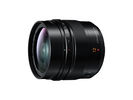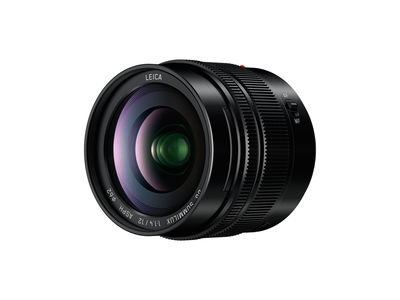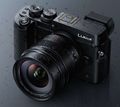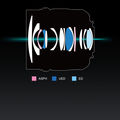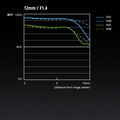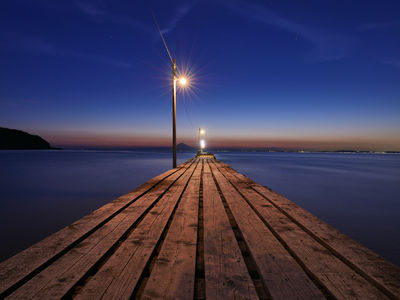LEICA DG SUMMILUX 1:1,4/12 ASPH.
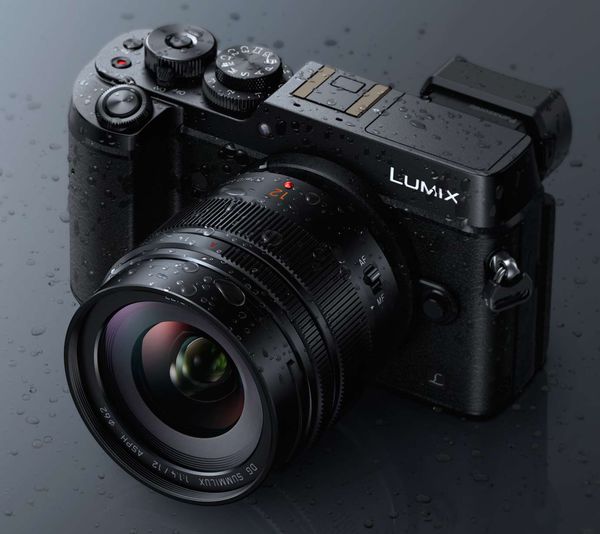
Beschreibung
Eine lichtstarke Festbrennweite von Leica für das mFT-System:
- durch die hohe Lichtstärke ist ein gezielter Umgang mit der Schärfentiefe auch im Super-Weitwinkelbereich möglich
- sehr gute Bildqualität sowohl in der Bildmitte als auch am Bildrand
- zwei asphärische Linsen
- zwei UED (Ultra Extra-low Dispersion)-Elemente
- ein ED (Extra-low Dispersion)-Element
- sehr gute Korrektur der sphärischen Aberration
- wenig empfindlich auf Gegenlicht
- Blende mit 9 (kreisförmigen) Segmenten für ein schönes Bokeh in den unscharfen Bildbereichen
- schneller und effizienter Autofokus (Schrittmotor mit 240 Hz)
- staub- und spritzwassergeschützte Fassung
- formschöne und sehr solide Fassung (überwiegende Verwendung von Metall)
- Gegenlichtblende aus Metall (im Lieferumfang)
Panasonic-Code: H-X012-K
Der Blendenring auf dem Metalltubus erlaubt die direkte Kontrolle über die Blendeneinstellung (nur bei Kameras von Panasonic).
Mehrere Quellen (43rumors und hi-lows-note.blog) geben an, dass das Design nicht von Leica, sondern von Sigma stammt. Eine offizielle Verlautbarung dazu ist nicht verfügbar, es scheint aber viele andere Fälle zu geben, bei denen das Objektiv-Design von "Fremdfirmen" hinzugekauft wird.
Firmware-Updates
Wie auch bei vielen anderen Objektiven liefert Panasonic auch hierzu umfangreiche Firmware-Updates:
| Version | Veröffentlichung am | Beschreibung |
| 1.0 | - | Produkteinführung |
| 1.1 | 01.03.2022 | It is possible to control AF operation by pressing the shutter button halfway, or by pressing the AF-ON button, when [200.00p] is set in high frame rate video mode. Compatible products as of March 1st, 2022 : DC-GH6 |
Zitate
Einige Zitate aus "Angetestet: Panasonic Leica Summilux 12 mm f/1.4" in neunzehn72.de:
- "Das Objektiv ist von der Verarbeitung und dem Finish an das 42,5er angelehnt. Volltreffer, absolut wertig. So muss sich ein Objektiv der Oberklasse anfühlen. Die Gegenlichtblende ist nun auch mit Bajonett ausgestattet."
"Die Abbildungsqualität ist hervorragend, sofern ich das anhand meiner Aufnahmen beurteilen kann. Knackscharf bereits ab Blende 1.4 und keine sichtbare Verzeichnung. Dabei muss man allerdings anmerken, dass bei Microfourthird schon einiges an Objektivkorrekturen in der Kamera vorgenommen und in die RAW-Files geschrieben wird. Ist mir aber wurscht wer was wo korrigiert, solange das Ergebnis stimmt."
"Das Panasonic 12 mm f/1.2 soll ab Anfang August im Handel für eine UVP von 1.399,- € verfügbar sein. Ein Haufen Geld, aber dafür bekommt man auch eins der besten Objektive, die für Microfourthird überhaupt erhältlich sind."
Ein Zitat aus dem Test in digitalkamera.de:
- "Unter mechanischen Gesichtspunkten wird das Panasonic Leica DG Summilux 12 mm F1.4 Asph. dem hohen Preis von 1.400 Euro absolut gerecht. Die hochwertige Konstruktion aus Metall wirkt langlebig und robust, was durch die Dichtungen zum Schutz vor Staub und Spritzwasser unterstrichen wird. Auch der Lieferumfang mit Transportbeutel und Metallgegenlichtblende ist standesgemäß. Letztere zeigt jedoch wenig Wirkung. Ein funktionaleres Design wäre angesichts der Gegenlichtempfindlichkeit sinnvoller gewesen. Zum Glück lässt sich dies mit einer händischen Abschattung beseitigen. Gegen die Offenblend- und Randschwäche des Objektivs bei der Auflösung hilft das jedoch nicht. Die geringe Randabdunklung sowie die praktisch nicht vorhandene Verzeichnung und Farbsäume können das leider nicht wettmachen. Insgesamt bietet das Objektiv damit für die 1.400 Euro zwar eine konkurrenzlose Lichtstärke, die aber mit einer weichen Auflösung einhergeht. Bei kleineren Blenden gibt es dagegen durchaus Alternativen im Micro-Four-Thirds-System wie von Olympus das 12 mm F2 und das 12-40 2.8 sowie von Panasonic das 12-35 2.8."
Einige Zitate aus dem Test bei pen-and-tell.de:
- "Fazit: Das Objektiv liefert panasonic-typisch digitale Schärfe an Rändern, hat abenteuerliche CAs, auch abgeblendet, liefert den heftigsten Blendenstern, den ich bei einer mFT-Optik bisher gesehen habe, LensFlares, an denen alles dran ist und ist ein ziemlicher Klopper."
"Dass man bei diesem Winkel auch halbwegs sauber korrigierte, lichtstarke Objektive bauen kann, hat Voigtländer beim 10,5er 0,95 und Laowa beim 7,5er 2,0 bewiesen. Das Voigtländer ist deutlich besser und sehr deutlich lichtstärker – zum gleichen Preis. Allerdings hat das Voigtländer keinen AF, auf den man aber bei einem solchen Winkel auch mal verzichten kann."
"Das 12er ist kein „No-Brainer“. Da muss man sehr genau wissen, was man will und was man sich damit einhandelt. Ich sehe das Objektiv vor allem im Nahbereich und wenn man einen RAW-Konverter hat, bei dem man die Entzerrung abschalten kann, auch bei der Personenfotografie. Und bei allem, was Blendensterne machen soll. Ein Every-Day-Weitwinkel ist das nicht."
"PS: Ich weiß, dass Herr Kirchheim auf digitalkamera.de dem Objektiv so gut wie keine Verzerrung, keine CAs und nicht vorhandene Gegenlichtempfindlichkeit attestierte. Vielleicht hatte er ein anderes Exemplar."
Einige Zitate aus "Panasonic Leica DG Summilux 12mm f/1.4 ASPH Review" bei photographyblog.com:
- "The Panasonic Leica DG Summilux 12mm f/1.4 ASPH is an outstanding ultra-wide-angle prime lens. It's exceptionally well-built, weather-proof and delivers fantastic image quality at both the centre and edges of the frame, even when shooting wide-open at f/1.4, and the very welcome aperture ring makes it quick, easy and precise to set this key element of exposure."
"Optically the Leica DG Summilux 12mm f/1.4 ASPH is an excellent performer. You can safely use it wide open for maximum bokeh and still achieve sharp results in the centre of the frame, or for optimum performance stop down to f/2.8, where even the edges of the frame are tack sharp."
"The only real drawback is the eye-watering price-tag of £1199.99 - you really need to be committed to the effective 24mm focal length to justify the cost. If you like the angle of view that the Panasonic Leica DG Summilux 12mm f/1.4 ASPH offers, though, there's very little reason not to add it to your kitbag. Highly Recommended!"
Einige Zitate aus "Panasonic Leica DG Summilux 12mm f/1.4 ASPH. Review" in ephotozine.com:
- "Sharpness is clearly aimed at spectacular results in the centre of the frame, at the expense of the edges to some degree. At the centre, sharpness is outstanding from open aperture right through to f/5.6, which is a superb result and explains the impressive look of the images on screen."
"The edges are not quite to the same high standard, but to be fair results are still very good from f2 through to f8, dropping to good at f/11. At f1.4 and f/16 sharpness is not really there and results can only be described as fair. However, many excellent lenses deliver the goods with “very good” levels of sharpness and the bonus here is that the centre is so dazzling."
"Distortion is almost zero, showing a very modest -0.38% of barrelling. CA (chromatic aberration) is also very low both at the centre and the edges of the field. Colour fringing will not be a problem."
"From the first moment that the images appear on the monitor screen it is obvious that this is a lens that produces very impressive results. Images are crisp and clean and visually very satisfying. Resistance to flare is excellent, particularly useful in a wide angle lens where the lens hood cannot be too intrusive because of the wide angle of view."
"Overall, a superb result from a lens with very desirable properties."
Ein Zitat aus "Lumix Diaries Shooting New Leica Lumix 12mm F/1.4" in naturalexposures.com:
- "Overall, I’m very impressed with this new lens. It’s a great move on Panasonic’s part to continue working with Leica to bring Micro Four thirds users the best optics possible for our smaller, MFT sensors. I love the mazing details that are easily seen from the center of the lens all the way to the extreme corners, even when shot wide open. It’s build feels as robust as any lens I’ve ever handled. As much as I love this new wide angle option we’ve been given, it really is a specialty lens for most photographers. The Lumix Vario 12-35mm F/2.8 also covers the 24mm range. Having a zoom can be a big advantage, especially one as sharp as the 12-35mm Vario. But if you want to shoot the Milky Way or any other scenes after the sun has gone down, this is by far the best lens we have for Micro Four Thirds users. How lucky we are to have so many great lens options in such a short time since Micro Four Thirds came on the scene. Thank you Panasonic for your continued development of truly professional optics that are smaller, lighter and less costly than the traditional DSLR lenses of the past."
Ein Zitat aus "Leica DG Summilux 12 mm F1,4 Asph – Prueba de campo" in dslrmagazine.com:
- "Los resultados de la prueba de campo demuestran que, efectivamente, se ha trabajado muy bien el diseño óptico: destacan la nitidez y resolución tanto en el centro como en las esquinas y no se aprecian halos ni aberraciones cromáticas. Sin embargo, dado que tampoco se aprecia ni la más mínima distorsión geométrica, tenemos motivos fundados como para poder afirmar que las correcciones por firmware también tienen mucho que ver en estos buenos resultados a pesar de tener desactivada la opción correspondiente en el menú de la cámara."
Zuletzt ein Zitat aus "Panasonic Leica 12mm f/1.4 Review" in mirrorlessons.com:
- " From its premium build quality and quick autofocus to its performance at the fastest apertures and sharpness across the frame, almost everything about this lens oozes quality and perfection. And even though it is larger and heavier than the most compact primes for the system, it is still much smaller and lighter than an equivalent 24mm f/1.4 for full-frame."
"The biggest disappointment is the lack of flare resistance in direct sunlight but this is a problem that afflicts many Micro Four Thirds lenses from Panasonic. Finally, we have the price, which is a direct reflection of the premium status of this lens. At nearly $1,300 US, it costs almost double the price of the Lumix GX85 body itself."
Technische Daten
| Hersteller: | Panasonic | Bezeichnung: | LEICA DG SUMMILUX 1:1,4/12 ASPH. | |||||||||
|---|---|---|---|---|---|---|---|---|---|---|---|---|
| Brennweite: | 12 mm | Herstellungszeitraum: | 2016 - - | |||||||||
| Lichtstärke: | 1,4 | Blendenbereich: | 1,7-16 | |||||||||
| Baulänge: | 70 mm | Durchmesser: | 70 mm | |||||||||
| Gewicht: | 335 g | Filtergewinde: | 62 mm | |||||||||
| Min. Entfernung: | 0.20 m | Max. Abbildungsm.: | 0.1x (Micro FT) / 0.2x (35-mm-Format) | |||||||||
| Bajonett: | Micro FT | Spritz-/Staubschutz: | ja | Bildstabilisator: | nein | |||||||
| Bildwinkel: | 84° | Linsen/Baugruppen: | 15/12 | Blendenaufbau: | 9 kreisförmige Lamellen | |||||||
| Innenfokussierung: | ja | Geradführung: | ja | Innenzoom: | entfällt | |||||||
| AF-Antrieb: | Schrittmotor | Fokussierung: | by Wire | Zoom: | entfällt | |||||||
| Besonderheiten: | 'volle Kontrast-AF-Funktionsunterstützung | |||||||||||
Lieferumfang
- LEICA DG SUMMILUX 1:1,4/12 ASPH. (schwarz)
- Micro Four Thirds Objektivdeckel
- hintere Objektivkappe für Micro Four Thirds Objektiv
- Gegenlichtblende
- Tragebeutel
- Garantieunterlagen und Bedienungsanleitung
Patent(e)
Hier gibt es Gerüchte, dass das Objektiv nicht von Leica/Panasonic sondern von Sigma designt worden ist - leider nicht eindeutig nachzuvollziehen (Quelle)
Galerie
Hier eine kleine Galerie mit Bildern des Objektivs:
LEICA DG SUMMILUX 1:1,4/12 ASPH. (schwarz) an einer Panasonic LUMIX DMC-GX8 - mit freundlicher Genehmigung von panasonic.de
LEICA DG SUMMILUX 1:1,4/12 ASPH. (schwarz) - mit freundlicher Genehmigung von panasonic.de
LEICA DG SUMMILUX 1:1,4/12 ASPH. (schwarz) - mit freundlicher Genehmigung von panasonic.de
LEICA DG SUMMILUX 1:1,4/12 ASPH. (schwarz) - mit freundlicher Genehmigung von panasonic.de
LEICA DG SUMMILUX 1:1,4/12 ASPH. (schwarz) - mit freundlicher Genehmigung von panasonic.de
LEICA DG SUMMILUX 1:1,4/12 ASPH. (schwarz) an einer Panasonic LUMIX DMC-GX8 - mit freundlicher Genehmigung von panasonic.de
Linsenschnitt des LEICA DG SUMMILUX 1:1,4/12 ASPH. - mit freundlicher Genehmigung von panasonic.de
MTF-Kurven zum LEICA DG SUMMILUX 1:1,4/12 ASPH. - mit freundlicher Genehmigung von panasonic.de
Tests und Bewertungen
Wertungen bei ephotozine.com
Das LEICA DG SUMMILUX 1:1,4/12 ASPH. wurde in der 2018-er Bestenliste von ephotozine.com geführt: No. 23.
Weblinks
- "Angetestet: Panasonic Leica Summilux 12 mm f/1.4" in neunzehn72.de
- Test in digitalkamera.de
- Test bei pen-and-tell.de
- "Panasonic Leica DG Summilux 12mm f/1.4 ASPH Review" bei photographyblog.com (englisch)
- "Panasonic Leica 12mm f1.4 review" in cameralabs.com (englisch)
- "Panasonic Leica DG Summilux 12mm f/1.4 ASPH. Review" in ephotozine.com (englisch)
- "Lumix Diaries Shooting New Leica Lumix 12mm F/1.4" in naturalexposures.com (englisch)
- "Panasonic Leica 12mm f/1.4 Review" in mirrorlessons.com (englisch)
- "Leica DG Summilux 12 mm F1,4 Asph – Prueba de campo" in dslrmagazine.com (spanisch)
- "Hands-on with new Panasonic Leica Summilux 12mm F1.4 ASPH" in dpreview.com (englisch)
- "Panasonic Leica DG Summilux 12mm f/1.4 ASPH. Video Review" in ephotozine.com (englisch)
Beispielaufnahmen
(c) Joerg Nicht - mit freundlicher Genehmigung von panasonic.de
(c) Joerg Nicht - mit freundlicher Genehmigung von panasonic.de
(c) panasonic.de - mit freundlicher Genehmigung von panasonic.de
(c) panasonic.de - mit freundlicher Genehmigung von panasonic.de
Bitte beachten:
Die tatsächliche Darstellung von Bokeh, Schärfe, Kontrast, Schärfentiefe etc. treten erst bei der Betrachtung in "Vollauflösung" in Erscheinung, hierzu wurden viele Bildbeispiele in Originalgröße (aber stark komprimiert) hinterlegt.
